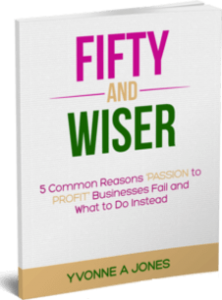Low-content products are products that have little or no content. These products are often designed to be filled in by the user. [definition]
Are you tired of spending countless hours and money on product creation? Low-content products may be the solution you've been looking for. These products offer high value to your target audience without requiring the development of complex products and services.
By effectively utilizing low-content products, you can significantly increase the impact of your content. This blog post will explore the world of low-content products and how they can benefit your business.
Contents:
What Are Low-Content Products?
In contrast to most products, like an online course which contains a great deal of text and/or video, “low-content” products are light on text and images. Instead, they offer a simple solution to a targeted need. Some examples of common low-content products include checklists, templates, journals, recipes, worksheets, and resource lists.
It's important to understand that low content does NOT mean low value. You still need to understand your audience's needs and plan the content so that it will make a difference in their lives. But the actual content creation takes less time and involves less work on your part.
Why Sell Low-Content Products?
There are several reasons to consider selling low-content products.
First, low-content products take less time to create, allowing you to produce more products. These products can be standalone or used as an add-on or low-ticket offer in your sales funnel.
Low-content products offer value to your customers by helping them achieve a specific goal, complete a task, or learn a new skill. These products also allow your customers to simplify a process and become better organized around a particular task.
Not only do low-content products provide value to your customers, but they can also help to build a stronger relationship with them. When done well, low-content products can increase customer satisfaction, resulting in repeat purchases and referrals.
Types of Low-Content Products
If you're trying to brainstorm ideas for a low-content product, start by thinking about your target customer's problems or desires. What could you create that would help them address these? Here are some examples to get you started brainstorming:
- Checklists. If a required task has stages or a list of things to do, create a checklist that clearly lays out each step in the process. Then, people just need to work their way through, checking off each item as it's completed.
- Planners. Take a large project or goal and break it up into steps or sections. Create a piece of content that guides the planning for the user so they can fill in different sections to complete their plan.
- Trackers. You can offer a tracking system that helps the user stay on target. It can help them ensure they're doing the work daily and seeing progress.
- Journals. Journals are especially good for educational content or creative projects. Users can write their reflections and ideas or jot down what they've learned after each course section.
- Worksheets. Like journals, worksheets are a helpful supplement to educational content such as an online course. Using a worksheet, the participant has a place to answer questions, follow instructions, and start doing the work on their own.
- Toolkits. In this type of low-content product, you can provide a variety of simple tools the customer can use to aid them in their task.
- Resource Guides.Provide users with a list of resources to find the content or information they need. Organize these resources so they can quickly locate exactly what they need.
- Calendars. Your customers might be able to make use of a ready-made calendar, such as an editorial calendar for content marketing or a calendar of holidays for planning promos.
- Templates. Create templates for documents your audience will use or tasks they will undertake. Make these templates customizable to the user's needs. They can get started immediately by plugging in the key information whenever they need the document.
Your low-content products can be physical or digital. Sometimes physical products may be more costly and challenging to produce and deliver, but there are also services that will produce and ship them. All of the above examples can be digital, which is quicker and easier to produce and distribute to your audience worldwide.
How to Create Excellent Low-Content Products
The key to low-content product success is knowing your audience well and understanding what they need and when.
Conduct research and find out what issues your target market is facing. Learn about your audience's tastes and try to think of an idea for a low-content product that is a good match for them and your brand.
Your low-content product can be a standalone offer or a complementary one that goes along with another product or service you offer. These products tend to work best as complementary offers, but if you have something precious, it can be successful on its own as well.
For example, you might create a resource guide for further information at the end of an online course. You might offer worksheets to accompany your instructional videos if you teach languages online. You can provide toolkits and planners to go along with a print book. For non-business examples, think about things like recipes for busy moms, guest books and planners for brides, or coloring pages for children.
Ways to Sell Your Low-Content Product
- Usually, low-content products are sold at a low price. The strategy here is to sell as many products as possible rather than selling just a few at a high price tag. With this method, you earn by selling volume.
- These offers can also be given away for free, which has several advantages. By adding additional value to a purchase, you can increase customer satisfaction. For example, you might offer free templates with a video course.
- Low-content products are handy as lead magnets to bring people into your sales funnel. For instance, you might offer a free list of resources in exchange for signing up to your email list, where you can then nurture the relationship and eventually pitch your other offers.
- Low-content products also work well as order bumps. An order bump is a low-cost offer you make at the point of checkout. The customer is about to hit the “Buy Now” button, and an offer appears for a complementary product at just a few dollars more.
How to Benefit from Low-Content Products
What kind of low-content product is best for your business? The product must be relevant to your audience and provide value while taking little time and effort to create. A good rule of thumb is that low-content products should be easy to make, easily affordable, and can be used over and over again.
Once you learn how to create a great offer, you can use low-content products in every area of your business.
Have you added low-content products to your product offerings? What has been your experience? Please share in the comments below. If not, is this something you'd like to add to your business?


